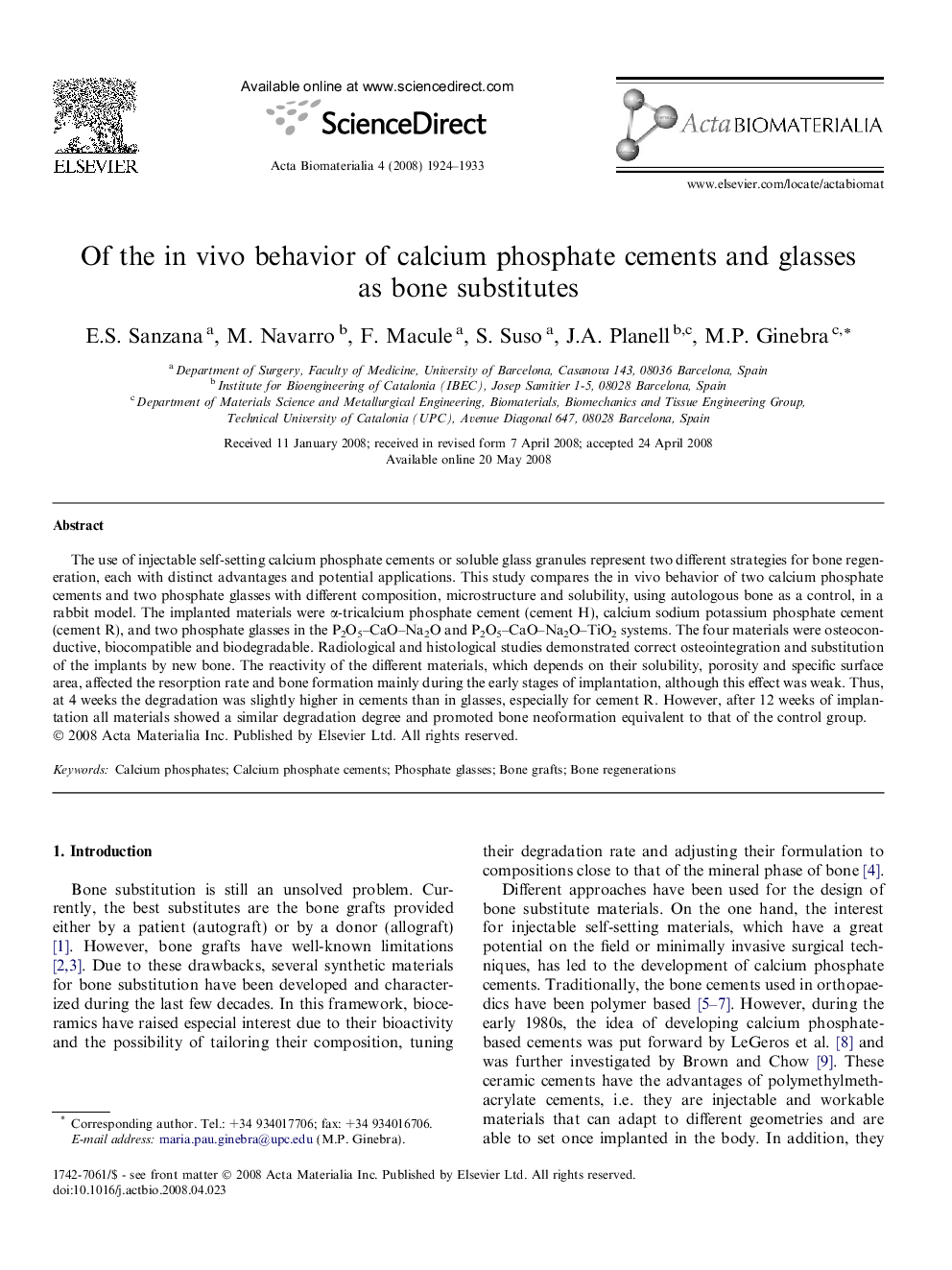| Article ID | Journal | Published Year | Pages | File Type |
|---|---|---|---|---|
| 1766 | Acta Biomaterialia | 2008 | 10 Pages |
The use of injectable self-setting calcium phosphate cements or soluble glass granules represent two different strategies for bone regeneration, each with distinct advantages and potential applications. This study compares the in vivo behavior of two calcium phosphate cements and two phosphate glasses with different composition, microstructure and solubility, using autologous bone as a control, in a rabbit model. The implanted materials were α-tricalcium phosphate cement (cement H), calcium sodium potassium phosphate cement (cement R), and two phosphate glasses in the P2O5–CaO–Na2O and P2O5–CaO–Na2O–TiO2 systems. The four materials were osteoconductive, biocompatible and biodegradable. Radiological and histological studies demonstrated correct osteointegration and substitution of the implants by new bone. The reactivity of the different materials, which depends on their solubility, porosity and specific surface area, affected the resorption rate and bone formation mainly during the early stages of implantation, although this effect was weak. Thus, at 4 weeks the degradation was slightly higher in cements than in glasses, especially for cement R. However, after 12 weeks of implantation all materials showed a similar degradation degree and promoted bone neoformation equivalent to that of the control group.
